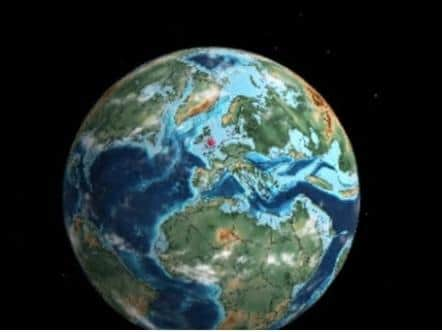New interactive map lets you see where Hemel Hempstead was located 500 million years ago
and live on Freeview channel 276
Scientists have created an online interactive map, revealing where Hemel Hempstead was located before millions of years of continental drift.
California palaeontologist Ian Webster created the new map in a web application, based on geological models created by Christopher Stoese, according to reports from CNN.
Advertisement
Hide AdAdvertisement
Hide AdYou can rotate the globe with your track pad or mouse, to see the way the continents have spread across the globe at different points in time.


The map allows you to virtually travel back in time with use of pre-set time increments. One such increment is the rough date the first flowers grew or the time of the first vertebrates.
It's not just Hemel Hempstead, Tring or Bekrhamsted you can look up, as it gives users the ability to search for any city or town name and track its movements through time.
For example, the English capital of London has found itself belonging to unrecognisable ancient continents and moving all over the globe before eventually splitting off as part of the island land mass known as England today.
Advertisement
Hide AdAdvertisement
Hide AdUsers can also get guides on which creatures existed on Earth at specific points in history.
For instance, 220 million years ago, in a time period known as the Middle Triassic, the map explains,
“The Earth is recovering from the Permian-Triassic extinction. Small dinosaurs begin to appear. Therapsids and archosaurs emerge, along with the first flying vertebrates.”
Mr Webster told CNN, the map "shows that our environment is dynamic and can change. The history of Earth is longer than we can conceive, and the current arrangement of plate tectonics and continents is an accident of time. It will be very different in the future, and Earth may outlast us all."
You can find the map online at Ancient Earth.